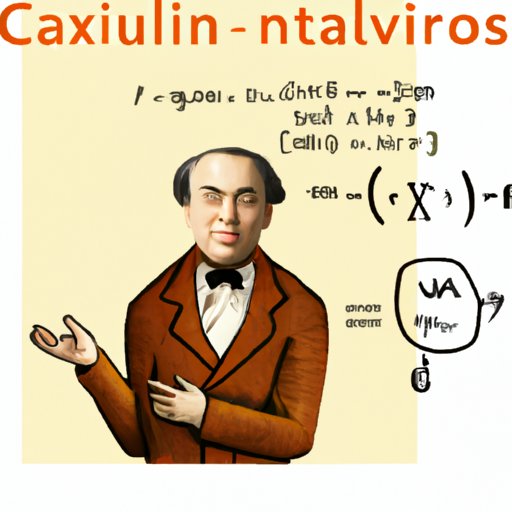Introduction
Calculus is a branch of mathematics that deals with the study of change and motion. It is used to model physical phenomena such as the motion of planets, the growth of populations, and the spread of disease. The invention of calculus is often credited to two men: Isaac Newton and Gottfried Leibniz. While both men played a role in the development of calculus, it is unclear who should be credited with its invention.

Biographical Profile of the Inventor of Calculus
Isaac Newton was born in 1643 in England. He attended Cambridge University, where he studied mathematics, physics, and astronomy. He is best known for his work on the laws of motion, which he published in his book Philosophiae Naturalis Principia Mathematica. He is also credited with the invention of calculus, which he developed in the 1670s.
Gottfried Leibniz was born in 1646 in Germany. He studied law and philosophy at the University of Altdorf and later went on to become a philosopher, mathematician, and physicist. He is credited with developing the first complete system of calculus in the 1680s. He is also known for his work on the binary number system, which is used in computing today.

Historical Timeline of the Development of Calculus
The development of calculus began with the ancient Greeks, who developed the concept of infinitesimals, or infinitely small numbers. This concept was further developed by mathematicians in the 17th century, including René Descartes and John Wallis. However, the two main inventors of calculus are Isaac Newton and Gottfried Leibniz.
In the 1670s, Newton developed the first version of calculus, which he called the “method of fluxions”. He used this method to solve problems related to motion and gravity. He published his results in his book Philosophiae Naturalis Principia Mathematica in 1687.
In the 1680s, Leibniz developed his own version of calculus, which he called the “differential calculus”. He used this method to solve problems related to geometry and motion. He published his results in his book Nova Methodus Pro Maximis et Minimis in 1684.
Although both Newton and Leibniz made significant contributions to the development of calculus, it is unclear who should be credited with its invention. Some historians believe that both men should be credited, while others argue that one should be given more credit than the other.
Comparison of the Works of the Two Main Inventors of Calculus
Despite the fact that Newton and Leibniz were working independently of each other, their approaches to calculus were similar. They both used the concept of infinitesimals to develop their theories, and they both used the same notation to express their results. However, there were some differences between their works. For example, Newton’s approach was more geometric, while Leibniz’s approach was more algebraic.

Explanation of How Calculus is Used in Modern Day Applications
Calculus is used in a wide range of applications, from engineering and economics to biology and medicine. It can be used to solve problems related to motion, optimization, probability, and statistics. It can also be used to model physical phenomena such as the motion of planets, the growth of populations, and the spread of disease. The use of calculus allows us to make predictions about the future and understand the behavior of complex systems.
Examination of the Impact Calculus Has Had on Mathematics and Science
The invention of calculus has had a profound effect on mathematics and science. It has enabled scientists to make more accurate predictions about the future, and it has allowed engineers to design more efficient machines. It has also helped us to better understand the behavior of complex systems, such as the stock market and the climate. Despite these benefits, calculus has also posed some challenges, such as the difficulty of understanding its abstract concepts and the complexity of solving its equations.
Conclusion
In conclusion, the invention of calculus is often credited to two men: Isaac Newton and Gottfried Leibniz. Both men made significant contributions to the development of calculus, but it is unclear who should be credited with its invention. Regardless of who invented calculus, it has had a profound effect on mathematics and science. It has allowed us to make more accurate predictions about the future and to better understand the behavior of complex systems.
(Note: Is this article not meeting your expectations? Do you have knowledge or insights to share? Unlock new opportunities and expand your reach by joining our authors team. Click Registration to join us and share your expertise with our readers.)
